Colorful Fall Road Trips Through National Parks
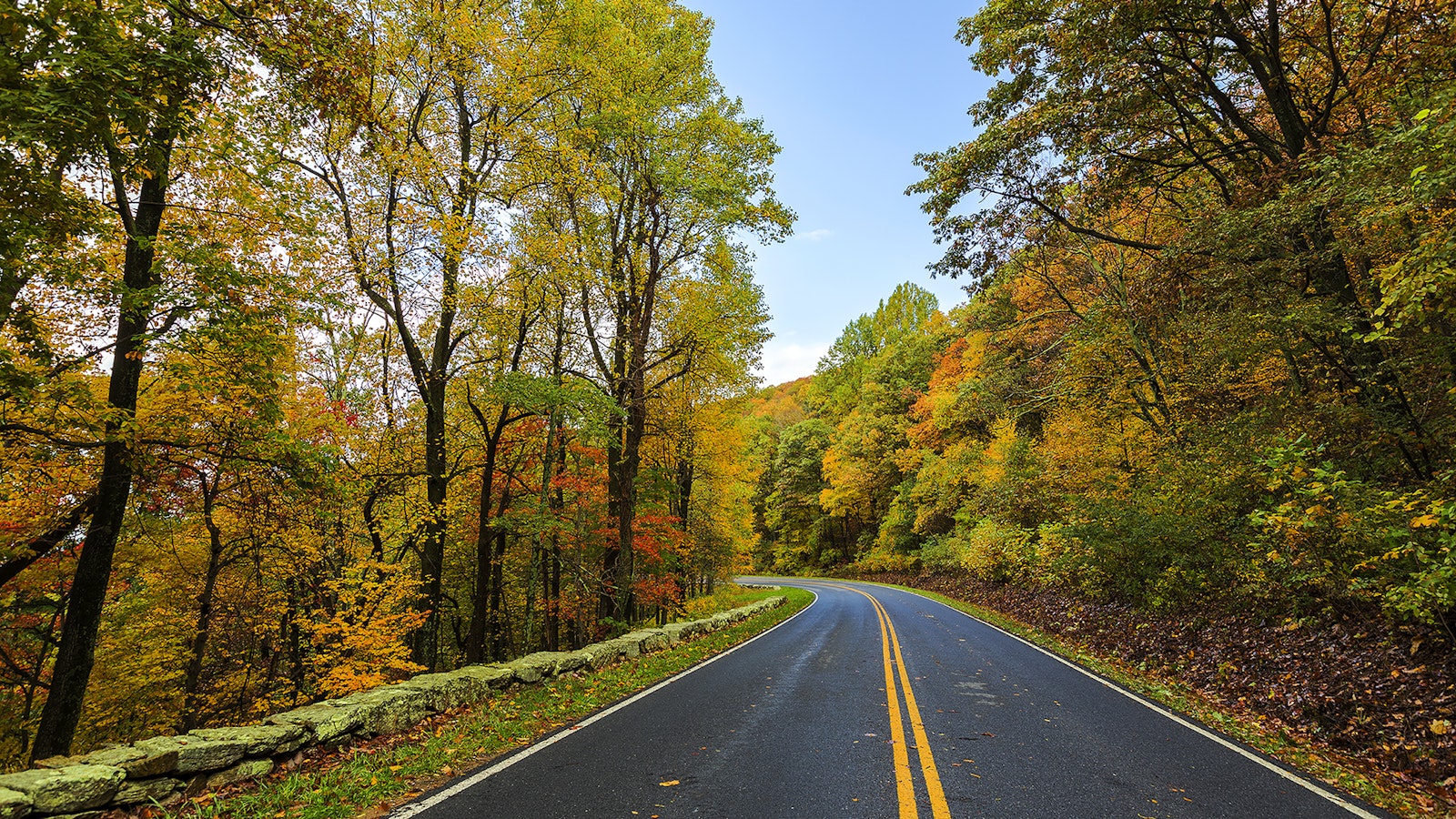
.
.
As the summer heat begins to subside and the fall colors make their first appearances in the treetops, autumn is the perfect time to hit the road and drive to – or even through – a national park. So grab your keys and set out on an open road adventure and discover the beauty and history of national parks along the way, as well as the ways the National Park Foundation (NPF) is helping visitors of all ages explore and enjoy these fantastic landscapes.
Rim Rock Drive
Colorado National Monument
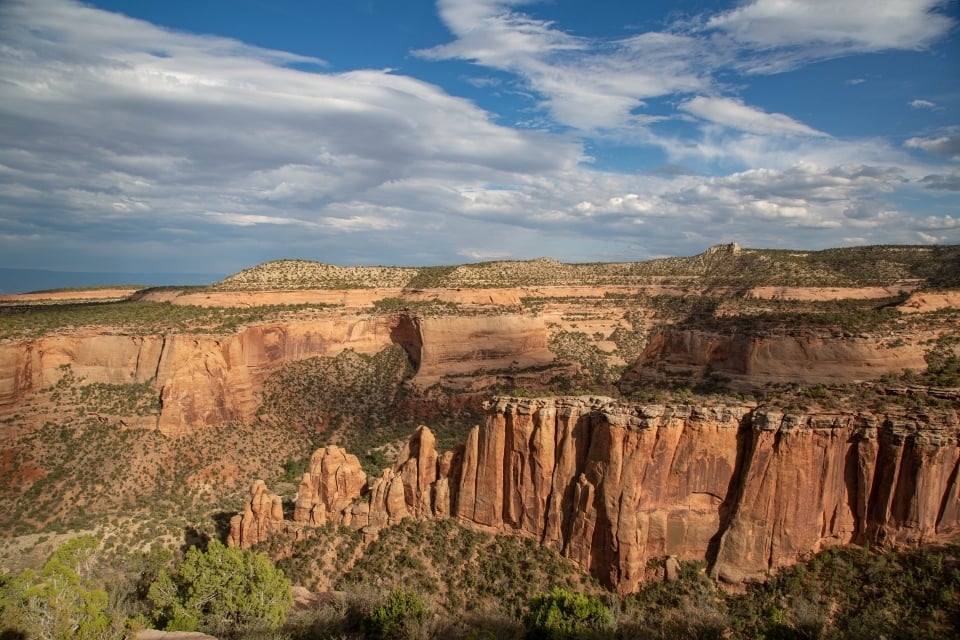
Bring in the autumnal vibes by visiting some sunset-tinted canyons on a spectacular drive through Colorado National Monument. Situated in the greater Colorado Plateau, this park features breathtaking landscapes of sheer-walled, red rock canyons hundreds of millions of years old. Tour the park by taking a drive along Rim Rock Drive, a 23-mile trek that offers a bird’s eye view of the canyons. See if you can spot any of the park’s bighorn sheep or eagles soaring across the Colorado sky, then stop at scenic overlook spots to capture the perfect photo and learn more about the canyons. Be forewarned: This drive is not for the faint of heart – some bits of Rim Rock Drive can be challenging, narrow, and steep – you will need to exercise caution along the road, shared with bicyclists.
Colorado National Monument offers all sorts of ways to explore the park's magnificent scenery, from driving along Rock Rim Drive to camping out under the stars or going rock climbing! In 2019, NPF's Open OutDoors for Kids program supported the park in inviting students to the park for 25 ranger-led field trips. Local elementary school students experienced the outstanding scenic, scientific, and recreational opportunities in the park, and teachers received a guide to help them lead STEAM (science, technology, engineering, arts, and math) experiences at the park for years to come.
Loop Road
Big Cypress National Preserve

If the autumn to you means embracing the eerie, mysterious side of things, then a trip to Big Cypress National Preserve may be in order! The diverse landscape of this park makes it home to all sorts of landscapes and creatures – you can discover everything from cypress and mangroves to alligators and maybe even an elusive panther. Explore dwarf cypress forests, pine forests, and deep strands within the park by journeying along the 27-mile Loop Road drive, and keep your eyes peeled for any of the park’s amazing wildlife. Be sure to ask a ranger about current road conditions before you set out – this mostly gravel route can be tricky to navigate in the wet seasons. If you’re looking for a more wide-open option in the park, try the Turner River, Upper Wagonwheel and Birdon Road Loop Drive – the 17-mile drive will take you by open prairies and wading bird feeding areas.
No matter how you're visiting a park, it's important to ensure your safety and the safety of park wildlife. NPF supported a Transportation Scholar who worked with Big Cypress National Preserve to help protect Florida panthers in the park from vehicle fatalities. The scholar worked on projects to design and place wildlife crossing signs, as well as improved the park's transportation network by monitoring panther speed zones and contributing to highway safety analyses.
Park Loop Road
Acadia National Park
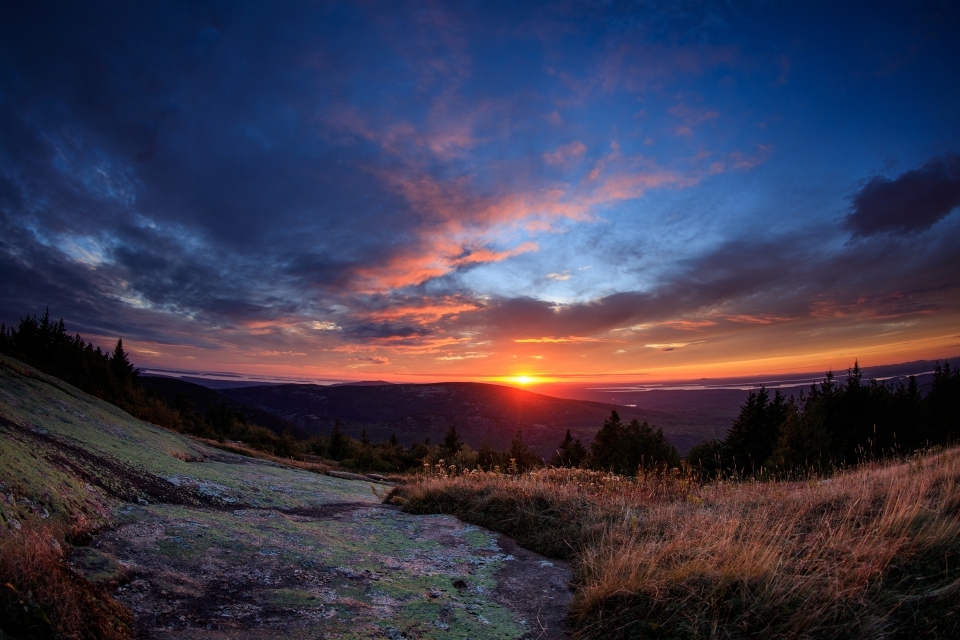
Bask in the beauty of the changing seasons by making a leaf-peeping trip to Maine's Acadia National Park. By following Acadia's 27-mile Park Loop Road, you’ll take in some of the most popular areas in the park like Jordan Pond and Sand Beach from the comfort of your car. Enjoy the panoramic views from Cadillac Mountain, the tallest mountain on the eastern seaboard, especially resplendent in an autumnal sunset. Park Loop Road, being one of the main ways to navigate around the park, can get crowded at times, so make sure you’re aware of parked cars and cyclists you may encounter on your drive. And if leaf-peeping is your favorite way to celebrate fall, make sure to explore other unique ways to take in the changing colors.
Thanks to a 2021 Open OutDoors for Kids field trip grant from NPF, Acadia National Park was able to bring these incredible views to students and their families through new programming. The park piloted virtual nature clubs for students in a local school district and developed fun, educational, and socially distanced outdoor activities for families visiting the park to explore, including scavenger hunts and self-guided trails.
Cades Cove Loop Road
Great Smoky Mountains National Park

Get ready to see some iconic American wildlife when you take a cruise through Great Smoky Mountains National Park along Cades Cove Loop Road. A one-way, 11-mile loop through the park’s broad valley, surrounded by mountains and flecked with autumnal-tinged trees, this drive is one of the best ways to see the park’s wildlife, including white-tailed deer, turkeys, black bears, coyotes and more. With all the wildlife spotting opportunities it offers, this drive can be a popular destination for park visitors and does see congestion during peak hours. Make sure to give yourself enough time to complete the loop – at least two to four hours – and be courteous to other park visitors along the way. Vehicle-free days do occur in the park each year, so make sure to check with the park before heading out if you’re planning on staying in your vehicle.
NPF has long been a supporter of Great Smoky Mountains National Park, from connecting students to the park to restoring the park's rare wetlands. An NPF Impact Grant helped remove invasive species of plants and sow seeds for native species cultivation in the park's wetlands, supporting critical habitat for the park's wildlife. In 2021, an Open OutDoors for Kids hybrid learning grant supported the park's on-site education center, developing a series of ranger-led, interactive field trips that students can enjoy no matter where they're learning.
Craggy Gardens
Blue Ridge Parkway

Along the Craggy Mountains in North Carolina, about 20 miles from Asheville, you can find the mile-high Craggy Gardens. The perfect spot to stop and picnic as you travel along Blue Ridge Parkway, Craggy Gardens provides breathtaking views of the southern Appalachian ridges in the distance. Known its summer rhododendron displays of pink and purple, Craggy Gardens is likewise remarkable in the fall, when fog dusts the tops of the mountainous ridges and red mountain ash berry spring up in clusters among the otherworldly, gnarled and twisted trees. If you want to stretch your legs after the drive, take a 1.5-mile hike on the Craggy Pinnacle Trail to the top of the mountains to enjoy the fantastic panoramic views – a great way to see the waves of changing colors in the autumn months.
Blue Ridge Parkway has a unique history – it began being built in the 1940s by the Civilian Conservation Corps (CCC) and was later completed by the National Park Service's mid-1950s development program, Mission 66. An NPF Impact Grant helped the park capture oral histories of people who had a personal or employment connection to the park, including those who worked on the parkway with the CCC. NPF also supported the park through our Active Trails program, through which two grants supported park staff in developing eight brochure-led adventures for visitors, as well as a TRACK Park – a discovery pack designed to enhance the discovery experience for children.
Ajo Mountain Drive
Organ Pipe Cactus National Monument

The fall season often has us reflecting on those who came before us. Take the popular Ajo Mountain Drive in Organ Pipe Cactus National Monument to retrace the steps of people who have traveled through the rugged landscape of the Sonoran Desert over the past millennia. A mostly gravel, 21-mile path through the backcountry of the park is full of twists and turns and offers great views of volcanic mountains and desert plants alike. As an International Biosphere Reserve, Organ Pipe allows the life of the Sonoran Desert to flourish under wildlife conditions. The park boasts 31 species of cacti alone, including the park’s namesake cactus – see how many types of cacti you can identify from your car window.
Students who visited the park as part of a 2015 Open OutDoors for Kids field trip probably could identify many of those cacti types! Thanks to the support of NPF, these students were able to take part in lessons on plant and animal adaptations within the park's landscape, solve riddles about the monument's history and resources, and even hike into the heart of the Sonoran Desert.
Cedar Breaks Scenic Byway
Cedar Breaks National Monument
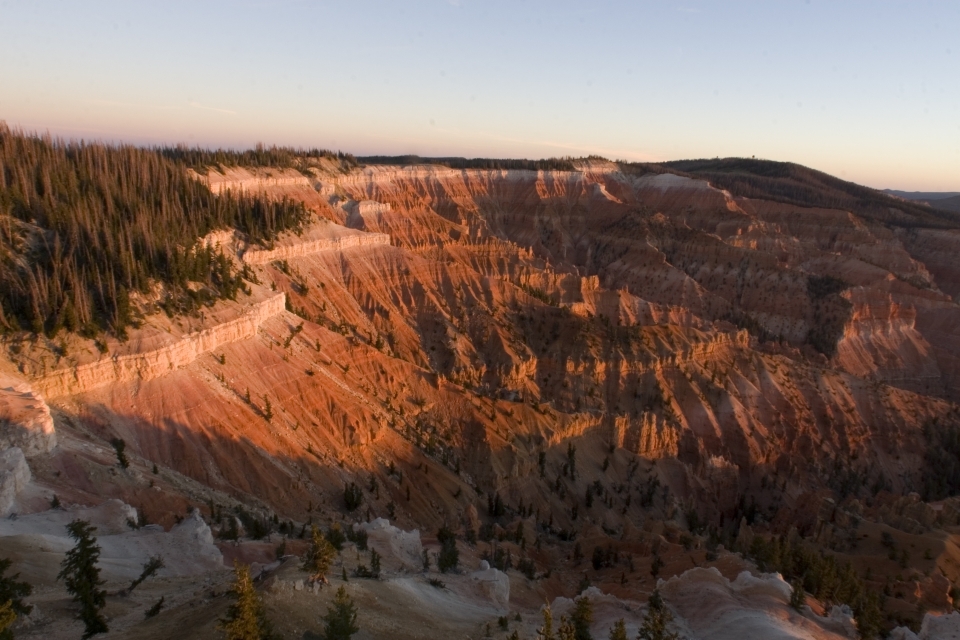
If you’re looking to experience some fall colors in a unique setting, it’s time to make a trip to Cedar Breaks National Monument in Utah. Cedar Mountain is often considered one of the best places to experience bursts of fall colors, and with many scenic highways near the park, there are plenty of opportunities to enjoy the changing colors of the season. Try the five-mile scenic drive on Utah Highway 148, heading north, to see some of the park’s main attractions, including the North View and Sunset overlooks and Point Supreme campground and picnic area. Along this path, you’ll enjoy the scenery of both the lush meadow and subalpine forests of the Markagunt Plateau as well as the coral and orange hues of the park's geologic amphitheater.
Skyline Drive
Shenandoah National Park
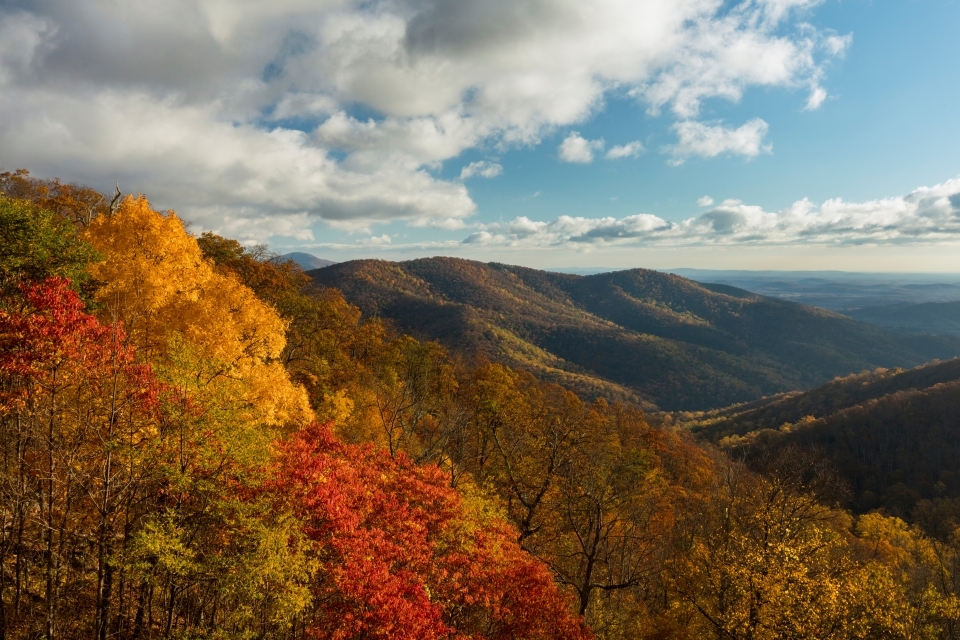
One of the most iconic drives in national parks, the Skyline Drive in Shenandoah National Park is as old as the park itself, dating back to a 1924 recommendation for a scenic drive along the top of the Blue Ridge Mountains. Partially built by the Civilian Conservation Corps, the route was opened to the public in the 1930s and has been enjoyed by millions of visitors ever since. The only public road through the park, Skyline Drive is a great way to take in the vast expanse of Shenandoah, with all its fall foliage and breathtaking views, from the comfort of your car. On a clear day, this 105-mile cruise will take about three hours to complete, providing plenty of opportunities to stop at scenic overlooks and take in the beauty of the park.
Shenandoah National Park also received a 2021 Open OutDoors for Kids hybrid learning grant, helping connect students grades K-12 learn about the science behind these beautiful sights. The grant supported the park's Virtual Ranger program, which covers a variety of subjects for students, as well as the park's Interactive Curriculums program, which enables students to explore the rich history of the park and their own connections to it and the outdoor world.
Scenic Drive
Arches National Park
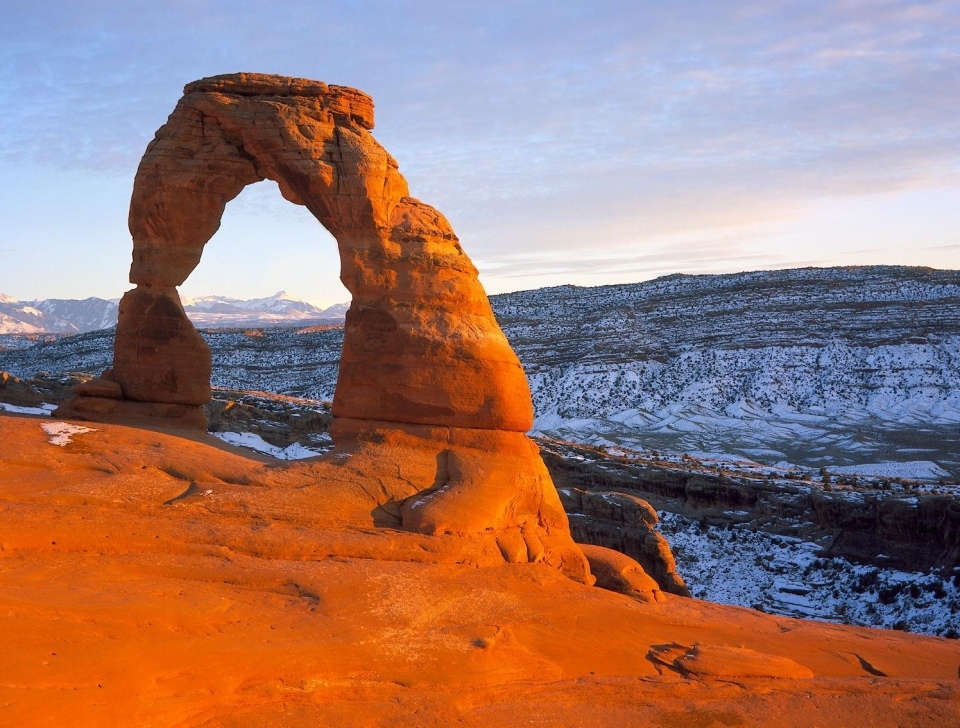
Though not leaf-peeping, you can still get your fill of national park orange landscapes when you visit Arches National Park. The park is home to over 2,000 orange-brown natural stone arches, in addition to hundreds of pinnacles, fins, and giant balanced rocks, making it the perfect out of this world experience to trek through this fall. Taking a scenic drive along the park’s paved roads is one way to get a lot out of the park if time is limited. Make sure if you’re visiting the park to visit the Windows section to peer at some of the largest arches in the park, and the Delicate Arch Viewpoint to see the world’s most famous stone arch. Parking at popular viewpoints can be limited, especially during peak hours, so try to plan your trip early in the morning or later in the afternoon or evening to avoid crowds.
When you're ready to leave the car to further explore the park, it's important that the park trails are accessible to as many visitors as possible without disturbing the park's landscape. An NPF Impact Grant helped construct erosion control structures on trails at Arches National Park, helping increase wheelchair accessibility and improving visitors' access to camping facilities, trails, and more.
Need some park-inspired, car-friendly activities? Hit play on our park-inspired playlist, a collection of great songs submitted by our park-loving community, and break out the car trivia from our Parkcade, sure to spark inspiration and wonder on your way to the park.